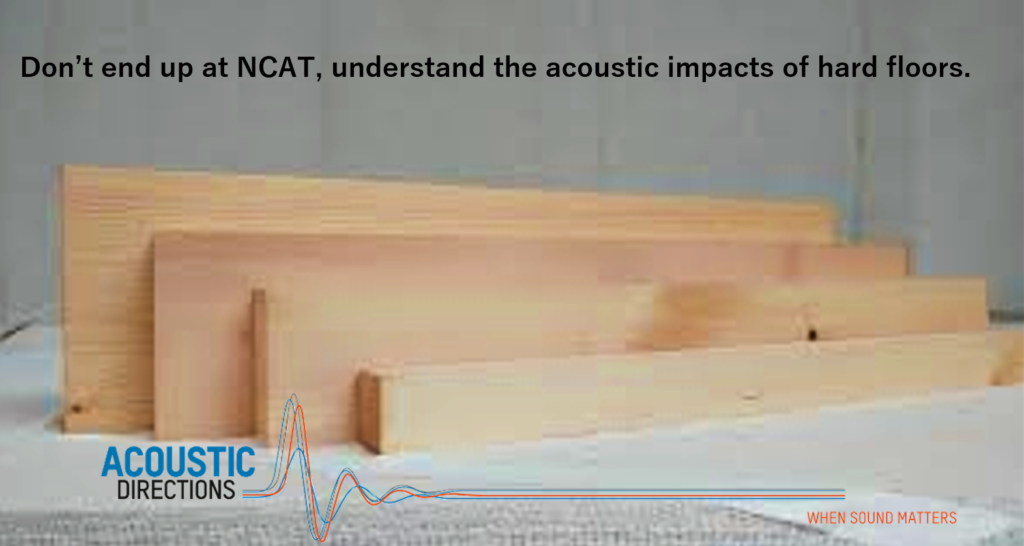What to consider when installing hard floors in Stata Building:
-
Strata By-Laws:
Each apartment building will have its own strata plan and associated by-laws. Often older by-laws may have a simple clause such as “any new floor should be covered or otherwise treated to an extent sufficient to prevent the transmission from the floor space of noise likely to disturb the peaceful enjoyment of the owner or occupier of another lot.” These types of by-laws can be difficult to access as subjective interpretations of sound can vary greatly.
However, by-laws can also include clauses that specify particular sound level performances for floors, as well as different criteria for various rooms. For example, “An owner of a Lot must ensure that all floor spaces within all Bedrooms of the Lot is covered or otherwise treated to an extent sufficient to achieve a minimum AAAC (Association of Australian Acoustical Consultants) 6 Star rating.”
In both instances, advice from a qualified acoustic engineer should be sought prior to purchase and installation of a new floor system. - Product Data: The product data available to the general public should not be taken on face value. The fact that specific building constructions always have some element of uniqueness means that it is not guaranteed that the rating specified in the manufacturer’s data will directly translate to the installed floor system. Their tests results are based on laboratory measurements.
In other words, if an acoustic underlay states that it can achieve an Ln,w of 45, it is important to note i) the size of the sample tested, ii) if the sample/s were loose-laid or glued, iii) if there was a suspended ceiling in the room below, and iv) the type and thickness of sample floor covering tested. - Product knowledge: Know your options. There are a vast number of acoustic underlays available on the Australian market and each product is developed for a specific application. Some of the most popular are rubber and/or cork-based mats, and polyester-based products. Each has different acoustic properties and benefits, so it is important to consider the application, thickness of the underlay, and the noise requirements for your specific situation. A qualified acoustic engineer will be able to guide you in the right direction.
-
Other important aspects to consider:
- Keeping in mind that the sound isolation of a floor can vary from room to room and building to building, it is wise to consider having sample tests of the proposed floor covering and underly conducted prior to purchase and installation of the floor. This will minimise the risk that the installed floor will not meet the by-law requirements.
- Existing door heights and skirting may need to be altered if a thicker underlay is needed to provide the required isolation.
- Location of the floor to be treated relative to the room below. For example, a tiled outdoor terrace or gym room located directly above a bedroom will be more problematic than the floor of a residential living room directly above the living room of the apartment below.
Have any questions? For more information contact us here.



